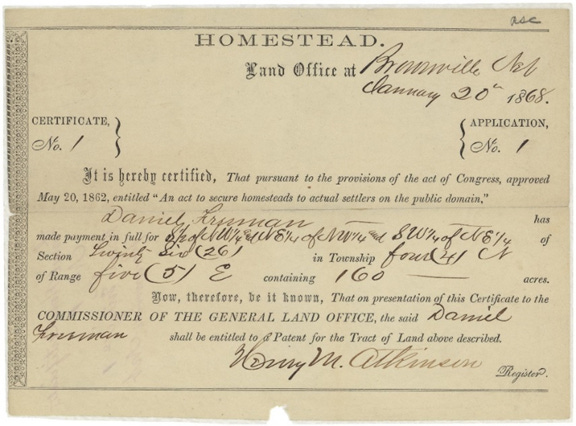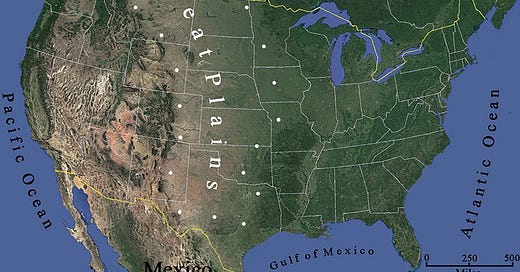On 29 October, 1929, the United States met the greatest economic devastation it had ever known at an event known as Black Tuesday. On Monday, 28 the market declined nearly 13 percent. On the following day, Black Tuesday, it dropped nearly 12 percent. The crash of the U.S. Stock Market led to the Great Depression. Commercial banks left short of reserves. People lost their life savings and many commerce and manufacturing companies went bankrupt. The unemployment rose to 25 percent. (Stock Market Crash of 1929, n.d.)
The ten-year economic downturn severely affected industries in Europe and around the world. Had it not been for the Great Depression, Hitler probably would not have come to power. Germany’s economy depended on short-term loans from the United States. Once these loans were recalled, the German economy was devastated, and social discontent intensified.
Historians have identified several causes of the events of the Great Depression. The stock market crash, the failure of banks to deal with the crisis, the wide income gap between the rich and the poor, and the weather conditions of the American Midwest.
The Great Depression had devastating consequences for the farmers of the Midwest. Demand for foodstuff dried up and prices plummeted. Farmers were usually safe from the severe effects of depressions because they could at least feed themselves. But the Great Depression was followed by another disaster. In the 1930, a severe drought that struck Kansas, Texas, Oklahoma, and New Mexico and wreaked havoc in the American Great Plains, an enormous and flat grassland which broadly covers the middle of the North American Continent. There were several factors that exacerbated the impact of the drought, which it become known as the Dust Bowl.

The Dust Bowl
The climate on the Great Plains varies from south to North and east to west. Generally, it is characterised by a continental climate, moderate temperature and moderate rainfall, but the Western part is semi-arid (the land east of the Rocky Mountains receives less than 50cm of rainfall every year), while the Earthen part is considerably wetter. All the region experiences cold winters and warm summers, although the Northern part is known for its bitterly cold and snowy winters.
During the American Civil War, the federal government encouraged people to move west, by providing them with public land, on the condition that they will improve it and farm it. The Homestead Act of 1862, which provided settlers with 160 acres, made many people, most of them inexperienced farmers, to flock to the Great Plains region. (The Homestead Act of 1862, n.d.)

During the 1910s and 1920s, the Great Plains was "the last frontier of agriculture" according to the government. A series of wet years, the war in Europe, and the rising wheat prices, created a frenzied wheat boom- the Great Plow-Up - that turned 5.2 million acres of thick native grassland into wheat fields. Years of excessive cultivation and overgrazing, combined with the effects of draught caused the grass to disappear. Lacking the strong root system of grass, the winds easily picked the loose topsoil and swirl it into dense dust clouds, known as the black blizzards. Massive dust storms darkened the sky, destroying everything in their path. Farmers left without crops while the dust choked thousands of cattle. (National Drought Mitigation Center, n.d.)
It seemed as if it could get no worse, but then it came Sunday, the 14th of April 1935. It was a hot morning, clear and dry in the southern Plains. But a cold front was starting to develop in Canada, moving southward and clashing with a high-pressure system in the Plains. In a few hours, the temperature fell about 30 degrees and a frenzy of winds start moving massive amounts of dry topsoil. A mountain of blackness enveloped cities and towns across Texas, Kansas and Colorado, covering farm building and machinery in the affected areas. The storm crossed South Dakota and entered Nebraska. Prevailing westerly winds carried the dust as far as eastwards as the Atlantic seaboard.
It was one of the worst dust storms in American history. It swept across the plain’s states, leaving a trail of devastation in its wake. Less than two weeks after the Black Sunday, on the 27 April,1935, Congress declared soil erosion “a menace to national welfare,” and acted by establishing the Soil Conservation Service. By then, however, many families had given up hope. Small farmers couldn’t feed their families or pay back their debts. 2.5 million people, known as exodusters or “Okies,” regardless of whether or not they were from Oklahoma, left Midwest for most favourable locations, like the cities in California and the agricultural regions in the Far West. It has been one of the largest migrations in the history of the United States. Unable to find permanent work and facing discrimination, many hit the road, traveling from place to place, seeking menial, low-paid jobs (Egan, 2020). This was the America of John Steinbeck and his epic 1939 novel The Grapes of Wrath.

The day after the Black Sunday, Robert E. Geiger, an Associated Press reporter, wrote an article for the Washington Evening Star. He used the term Dust Bowl to describe the region he was referring.
“The Dust Bowl is the worst man-made ecological disaster in American history,” says Ken Burns, who documented the environmental catastrophe in a 2012 film. It affected the social, economic and political landscape of the United States, and it would take ten years for the country to recover. (Burns, 2012)
The Greenhouse Effect of the Earth's Atmosphere
A thousand miles (1600km) away in Washington D.C., the physicist Edward Olson Hulburt, was working in the United States Naval Research Laboratory. Hulburt was a remarkable scientist and a keen observer of nature. In 1931, he published a paper, titled, “The Temperature of the Lower Atmosphere of the Earth,” where he disproved Knut Ångström’s findings about the intensity of carbon dioxide during the absorption of the Earth’s atmosphere, and demonstrated that the absorption of infrared radiation trying to escape from the Earth back to space was of key importance. He also suggested that “doubling or halving the carbon dioxide in the atmosphere changes to by 4°C rise or fall of surface temperatures.” Hulburt argued that “… such changes in temperature are about the same as those which occur when the earth passes from an ice age to a warm age, or vice versa” and thus “the carbon dioxide theory of the ice ages, originally proposed by Tyndall, is a possible theory.” (Hulburt, 1931)
Hulburt’s paper was published in the Physical Review, a journal not particularly popular in the community of Earth and atmospheric scientists, and as a consequence, it has been largely ignored by the scientific community. Hulburt, who served as the Laboratory’s first director of research (1949-1955), participated in the discovery of the ionosphere and contributed to our understanding of solar terrestrial relationships.
Further north, at the University of Wisconsin, the geographer Glenn Thomas Trewartha kept himself busy investigating the weather and the climate elements, such as temperature, precipitation, and storms and their relative significance in contributing to an understanding of regional climates. In 1937, Trewartha published an obscure and brief textbook, titled “Introduction to Weather and Climate,” which was “designed to provide an outline of content for a general introductory course on the atmosphere.” The sun energy, writes Trewartha, enters our atmosphere as shortwave radiation in the form of ultraviolet (UV) rays and visible light. Once in the Earth’s atmosphere, clouds and ozone absorb a part of it (today we know it is about 23 percent), while about half (48%) of this energy, passes through the atmosphere and is absorbed by the Earth’s surface where part of it (51% according to Trewartha) is transformed into heat. (Trewartha, 1937, p. 16)
The troposphere is the lowest layer of the atmosphere and it contains the air we breathe. Nearly all atmospheric water vapour or moisture is found in the troposphere, so it is the locus of most of the weather phenomena. Troposphere is almost transparent to sunlight, writes Trewartha, however, there are gases that are efficient absorbers of the energy that Earth emits back to space as longwave radiation in the form of infrared rays. The two most effective of these gases, are water vapour and carbon dioxide, which absorb energy that otherwise go back into space, resulting in heating up the atmosphere. Eventually, they give up a bit of this energy, by emitting infrared radiation downward, towards the Earth's surface, as well as upward, towards space.
“Obviously the effect of the atmosphere is analogous to that of a pane of glass, which lets through most of the incoming short-wave solar energy but greatly retards the outgoing long-wave earth radiation, thus maintaining surface temperatures considerably higher than they otherwise would be. This is the so-called greenhouse effect of the earth's atmosphere.” (Trewartha, 1937, p. 21)
As far as we know, it was the first time to call this phenomenon by its now familiar name. Yet, the book didn’t raise any particular interest in the scientific community. And the issue of human-driven global warming didn’t emerge in the public sphere before the late 1960s and 1970s, when the atmospheric modelling community began to provide corroborating evidence on global warming.

In 1968, Glenn T. Trewartha published a modified version of Wladimir Köppen’s climate classification, which categorized climate zones throughout the world based on vegetation distribution. The Köppen system classifies climate into five main climate zones and 30 sub-zones and it was based on the temperature and the precipitation of a region. Köppen continued to revise it until his death in 1940 with collaboration by the climatologist Rudolf Geiger. The five major domains were Tropical and the Subtropical, Temperate, Boreal and Polar. Updated version of the classification map is still widely used today. Apart from Trewartha’s 1968 version, there were further revisions, the most resent on in 2018.
Sources and Further Reading
Stock Market Crash of 1929. (n.d.). Retrieved from Federal Reserve History: Stock Market Crash of 1929
The Homestead Act of 1862. (n.d.). Retrieved from National Archives : https://www.archives.gov/education/lessons/homestead-act
National Drought Mitigation Center. (n.d.). Retrieved from The Dust Bowl: https://drought.unl.edu/dustbowl/Home.aspx
Burns, K. (Director). (2012). The Dust Bowl [Motion Picture]. Retrieved from https://www.pbs.org/kenburns/the-dust-bowl/#watch
Hulburt, E. (1931, November). The Temperature of the Lower Atmosphere of the Earth. Physical Review, 38(10), 1876-1890. doi:10.1103/physrev.38.1876
Trewartha, G. T. (1937). An Introduction to Weather and Climate. New York : Mc Graw-Hill





